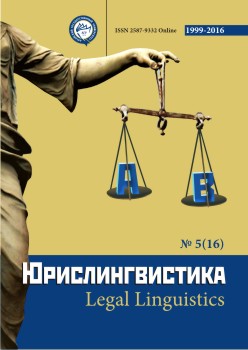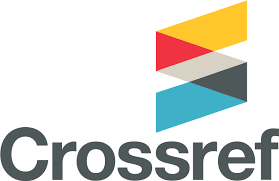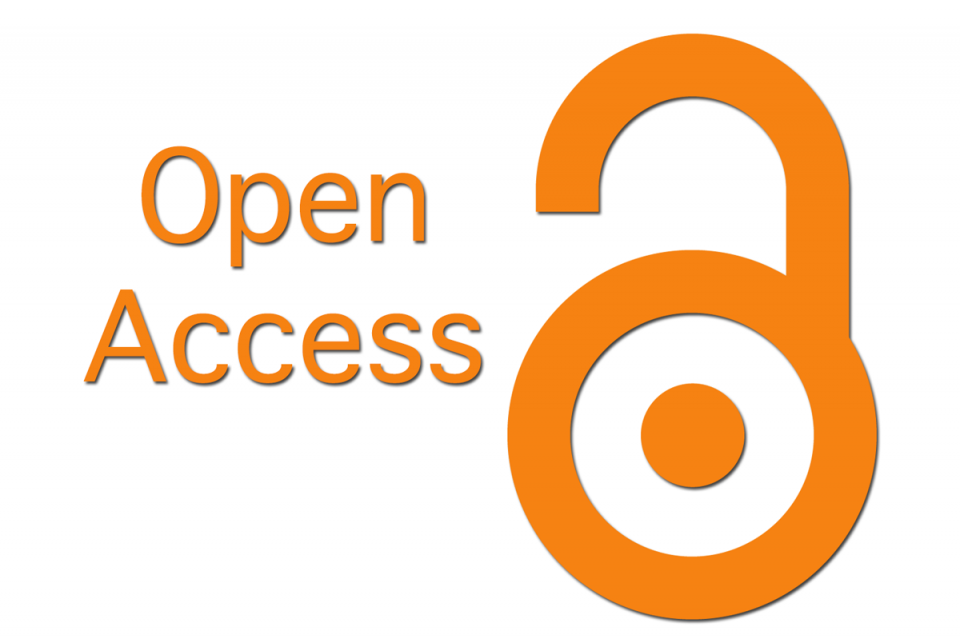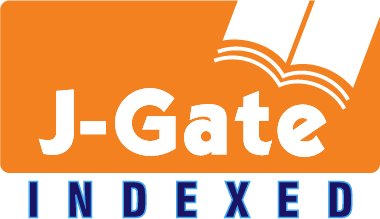"DEGREE OF SIMILARITY CLOSE TO CONFUSION ": LINGUISTIC ASPECT
Abstract
This paper describes a semiotic mechanism for creating trademarks that are similar to each other to the point of confusion. Correlations with legal notion of «confusing similarity " are searched for in the field of Communication. We mainly emphasize the probability of misleading the consumer about the origin of the goods. In combined trademarks, the similarity is advisable to be determined through the various components of the structure and through the functioning of the trademark. A formal-semantic similarity of the trademarks can be considered as paronymy - a motivated substitution of one name for another in the speech functioning. Other trademarks can be considered as paronomasia, because they are similar to each other only graphically and phonetically. The article classifies the methods of creating trademarks that are similar to the degree of confusion. The suggested properties of the presented methods, in our opinion, are not identical, and their measurement requires experimental research.
Downloads
Metrics
References
Лосев С.С. Правовая охрана товарных знаков. //Юрист. М., 2002. – №1 (8). – С. 39-42.
Веркман К. Дж. Товарные знаки: создание, психология, восприятие. М., 1986.
Хефтер Л.Р., Литовиц Р.Д. Что такое интеллектуальная собственность? // Права интеллектуальной собственности в Соединенных Штатах Америки : Документы, комментарии специалистов, справочные материалы: [Сб. / Сост. Э. Джонсон]. – М., 2002.
Чармэссон Г. Торговая марка: как создать имя, которое принесет миллионы. – Спб., 1999.
Жарков И.В. Сходство до степени смешения: взгляд эксперта-лингвиста. //Патентный поверенный. М., 2009. – № 4. – С. 22-24.
Голев Н.Д., Дударева Я.А. Семантическая близость как показатель сходства коммерческих обозначений до степени смешения.// Вестник Кемеровского университета. Кемерово, 2014. – №1-2 (13). – С. 136-139.
Новичихина, М. Е. О некоторых трудных случаях лингвистической экспертизы товарных знаков. //Вестник ВГУ. – 2012. – № 1. – (Серия: Филология. Журналистика).
REFERENSE
Losev S.S. Legal protection of trademarks. [Pravovaia ohrana tovarnih znakov]. Lawyer. - 2002. - №1 (8). - P. 39-42.
Verkman K.J. Trademarks: creation, psychology, perception. [Tovarnie znaki: sozdanie, psihilogia, vospriatie]. M., 1986
Hefter L.R., Litovitz R.D. What is intellectual property? [Chto takoe intellektualnaia sobstvennost]. Intellectual property rights in the United States of America: Doc., Comment. Specialists, information. Materials: [Sat. / Comp. E. Johnson]. - M.: Liberia, 2002. - 143 p.
Charmesson G. Brand: how to create a name that will bring millions. [Torgovaia marka: kak sozdat imja, kotoroe prineset millioni]. St. Petersburg., 1999.
Zharkov I.V. Similarity to the degree of confusion: the view of an expert linguist. [shodstvo do stepeny smeshenia: vzglad experta-lingvista]. Patent Attorney. M., 2009. - No. 4. - P. 22-24.
Golev N.D., Dudareva Ya.A. Semantic proximity as an indicator of the similarity of trade names to the degree of confusion. [Semanticheskaia blizost kak pokazatel shodstva kommercheskih oboznachenij do stepeni smeshenia]. Vestnik of Kemerovo University. Kemerovo, 2014. - №1-2 (13). - P. 136-139.
Novichikhina, M.E. On some challenging cases of linguistic expertise of trademarks. [O nekotorih trudnih sluchajah lingvisticheskoi ehpertizi tovarnin znakov]. Bulletin of the VSU. - 2012. - № 1. - (Series: Philology, Journalism).
Copyright (c) 2017 Юрислингвистика

This work is licensed under a Creative Commons Attribution 4.0 International License.
The authors, which are published in this journal, agree to the following conditions:
1. Authors retain the copyright to the work and transfer to the journal the right of the first publication along with the work, at the same time licensing it under the terms of the Creative Commons Attribution License, which allows others to distribute this work with the obligatory indication of the authorship of this work and a link to the original publication in this journal .
2. The authors retain the right to enter into separate, additional contractual agreements for the non-exclusive distribution of the version of the work published by this journal (for example, to place it in the university depository or to publish it in a book), with reference to the original publication in this journal.
3. Authors are allowed to post their work on the Internet (for example, in a university repository or on their personal website) before and during the review process of this journal, as this may lead to a productive discussion, as well as more links to this published work (See The Effect of Open Access).











